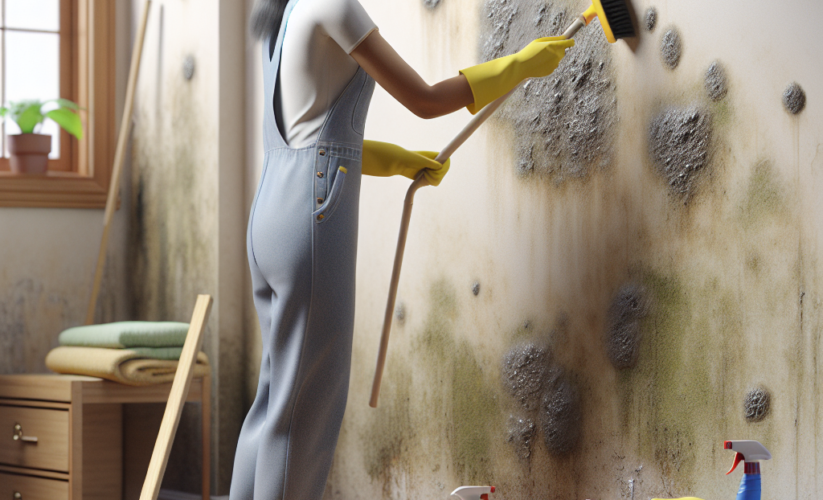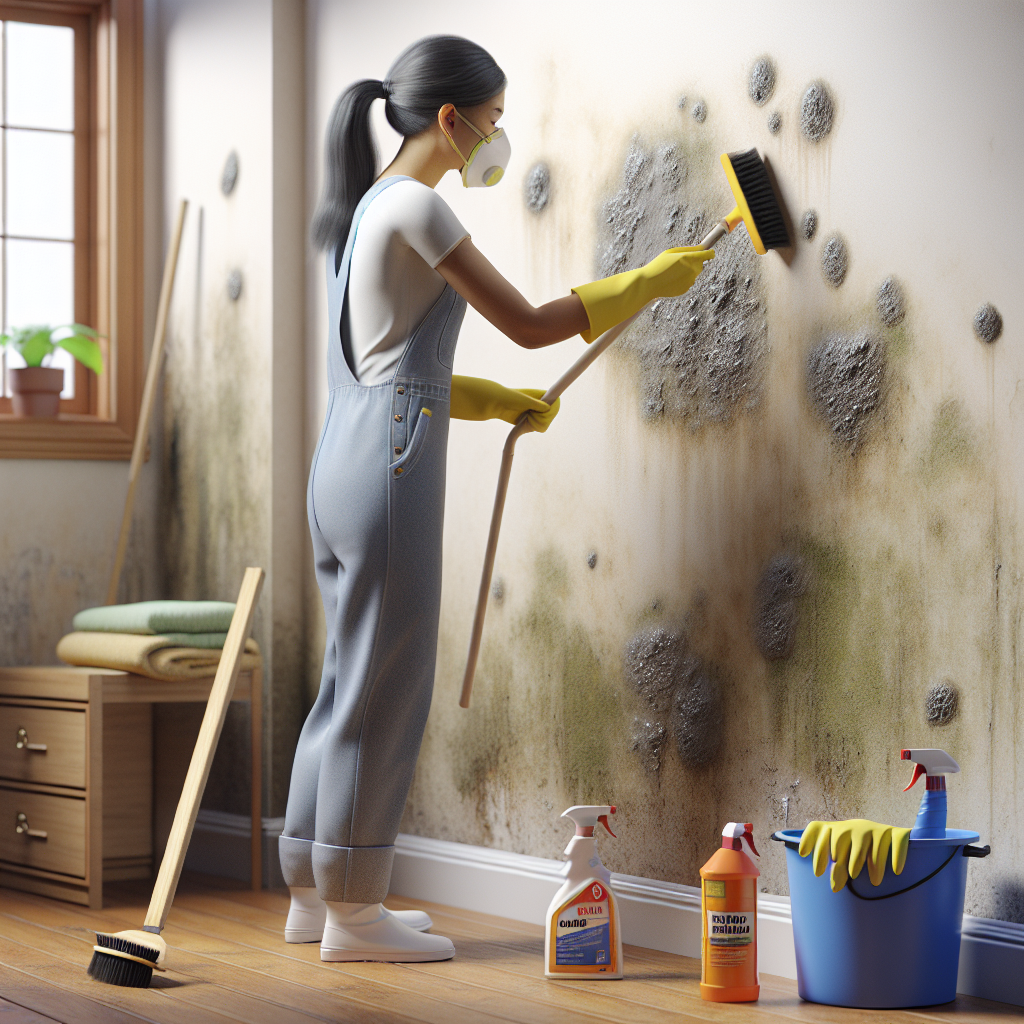
“Proven Secrets to Remove Schimmel Wand Safely and Effectively”
Schimmel Wand: Understanding and Addressing Mold Issues
What is Schimmel Wand?
Schimmel wand, or mold on walls, is a common issue faced by many homeowners and renters. Mold is a type of fungus that thrives in damp, dark conditions and can appear in various colors, with the most recognizable being black or green. Schimmel can not only damage your property but also pose health risks to the occupants. Understanding the causes and prevention strategies is vital for maintaining a healthy living environment.
The Causes of Schimmel Wand
Mold growth occurs when the conditions are right, particularly in areas with humidity and poor ventilation. Common causes of **schimmel wand** include leaks from plumbing, water intrusion from the outside, and inadequate ventilation. In kitchens and bathrooms, for example, steam from cooking or showers can lead to moisture accumulation, creating an ideal habitat for mold. To prevent schimmel, it is essential to address leaks quickly and ensure proper airflow throughout the space.
Health Implications of Schimmel Wand
Exposure to **schimmel wand** can lead to a variety of health problems, especially for those with allergies, asthma, or weakened immune systems. Symptoms range from respiratory issues, such as coughing and sneezing, to more severe reactions in sensitive individuals. Prolonged exposure can result in more severe conditions, such as mold infections or chronic respiratory diseases. It’s crucial to address mold issues promptly to mitigate these health risks.

Identifying Schimmel Wand in Your Home
Detecting **schimmel wand** early can save you time, money, and health issues down the line. Look for visible signs such as discoloration on walls or ceilings, often characterized by spots or patches of grey, green, or black. Pay attention to any musty odors as well, as these can indicate hidden mold in areas like behind drywall or inside ventilation ducts. Regular inspections in high-moisture areas, such as basements and crawl spaces, can be beneficial in identifying mold growth before it escalates.
How to Perform a Mold Inspection
Conducting a thorough inspection for **schimmel wand** doesn’t require professional experience. Begin by checking areas prone to moisture, including around windows, pipes, and under sinks. Use a flashlight to examine dark corners that might be overlooked. If you notice any signs of mold, it’s essential to take samples for testing, particularly if the mold appears black, which could indicate a type known as toxic black mold. Remember to wear protective gear like gloves and masks when handling suspected mold.
Case Study: Successful Mold Removal
In one residential case involving severe **schimmel wand**, the homeowners began to notice an unusual smell in their basement. Upon inspection, they discovered extensive mold growth along the walls. They contacted a mold remediation professional who assessed the situation, identifying a hidden leak from a burst pipe. After the leak was repaired, they utilized a combination of drying the area and using mold-killing solutions to eradicate the existing mold. Regular follow-up checks ensured that no further mold developed, demonstrating the effectiveness of combined remediation efforts.
Preventive Measures for Schimmel Wand
Preventing **schimmel wand** is often easier than treating it after it appears. Implementing a few practical measures can significantly reduce the risk of mold growth. Ensure proper ventilation in high-humidity areas by using exhaust fans in bathrooms and kitchens. Dehumidifiers can also help maintain optimal indoor humidity levels, ideally between 30-50%. Additionally, regular checks for leaks in plumbing and roofing can catch issues before they escalate into mold growth.
Best Practices for Ventilation and Humidity Control
To keep your home mold-free, enhancing ventilation is crucial. Use ceiling fans and open windows whenever possible to improve air circulation. In rooms prone to moisture, such as bathrooms, keeping doors slightly ajar can also help. For humidity control, measuring indoor humidity levels with a hygrometer can guide your ventilation efforts. If levels rise above 50%, consider investing in a **dehumidifier** or using air conditioning more effectively to keep moisture levels in check.
Routine Maintenance for Mold Prevention
Incorporating routine maintenance checks can help prevent **schimmel wand**. Regularly inspect attics, basements, and crawl spaces for signs of water damage or moisture accumulation. Clean gutters, downspouts, and outdoor drainage systems to ensure water flows away from your home’s foundation. You could also consider using mold-resistant materials during renovations, such as mold-resistant drywall or paint, as an additional safeguard against future growth.

What to Do If You Find Schimmel Wand
If you discover **schimmel wand**, acting quickly is essential. Start by identifying the source of moisture and repairing it. Depending on the extent of the mold infestation, small patches can often be cleaned by homeowners with a mixture of detergent and water or specialized mold removers. However, larger infestations might require professional intervention to ensure thorough treatment and safety.
DIY Removal Techniques for Small Infestations
For minor **schimmel wand** issues, DIY removal can be effective. Begin by wearing protective gear such as gloves, goggles, and a mask. Prepare a cleaning solution of one cup of bleach mixed with one gallon of water. Using a sponge, scrub the affected area thoroughly. After cleaning, ensure the area is dry to deter future growth. It’s important not to mix bleach with ammonia, as this can create toxic fumes.
When to Seek Professional Help
Knowing when to call professionals is crucial for ensuring safety and thorough remediation. If **schimmel wand** covers a large area (greater than 10 square feet), if there is significant structural damage, or if the mold has a musty or pungent odor suggesting a deeper issue, it’s advisable to seek professional help. Certified mold remediators have the right tools and expertise to handle large infestations safely and effectively.
Key Takeaways
- **Schimmel wand** is a common issue that can lead to health concerns.
- Preventive measures include proper ventilation and humidity control.
- Early detection through regular inspections can save significant time and resources.
- Both DIY methods and professional services are available for mold removal.
FAQ
1. How can I tell if I have Schimmel Wand?
The most common signs of **schimmel wand** include visible discoloration on walls and a musty odor. Areas around windows, bathrooms, and kitchens are prone to mold growth, and regular inspections can help identify issues early.
2. Can I remove Schimmel Wand myself?
Yes, for small infestations, you can use a mixture of bleach and water or specialized mold cleaner. Ensure to wear protective gear and dry the area afterward to prevent recurrence.
3. What should I do if the mold keeps coming back?
If **schimmel wand** continues to recur after cleaning, it may indicate a persistent moisture problem. Investigate possible leaks and consider consulting a professional for a thorough assessment of your home’s moisture levels and mold risks.
4. Is Schimmel Wand dangerous for my health?
Yes, exposure to **schimmel wand** can lead to respiratory issues and other health problems, particularly for individuals with allergies or compromised immune systems. Immediate action to remove mold is essential for health safety.
5. How can I prevent Schimmel Wand from forming?
To prevent **schimmel wand**, ensure proper ventilation in your home, use dehumidifiers in prone areas, and conduct regular maintenance checks for leaks. Making these practices part of your routine can significantly reduce mold growth.